In the world of cloud computing, Azure is a leading player, offering a wide range of services for businesses of all sizes. As organizations continue to migrate their workloads to the cloud, cost management becomes a critical aspect of their strategy. Two key options for optimizing costs on Azure are Azure Savings Plans and Reserved Instances (RIs). In this blog, we will explore the differences between these two cost-saving mechanisms and help you decide which one is right for your organization.
Azure Savings Plan overview
The Azure Savings Plan for compute represents a versatile pricing framework that delivers savings of up to 65% compared to pay-as-you-go rates. To make use of these savings, you need to commit to spending a fixed hourly budget on compute services for either one or three years. By making this commitment, you can receive discounts on your resource usage up to the amount you’ve committed to on an hourly basis.
Key benefits of using Azure Savings Plan
Flexible Discounts
Azure Savings Plans offer discounts of up to 65% off pay-as-you-go pricing. They apply to Azure compute resources, providing greater flexibility. This means you can adapt to changing workload requirements without sacrificing cost savings.
Hourly Commitment
When you use Azure Savings Plans, you commit to a fixed hourly spending amount, rather than locking into instance configurations. This hourly commitment allows you to receive discounts on the resources you consume. It’s a more adaptable approach that enables you to align your costs with your actual usage.
Automated Savings Application
Savings Plans automatically apply your discounts to your Azure resource usage. You don’t need to manually manage which instances match your reserved capacity, as the system handles it for you. Any unused savings are carried forward to the next month, ensuring you make the most of your cost reductions.
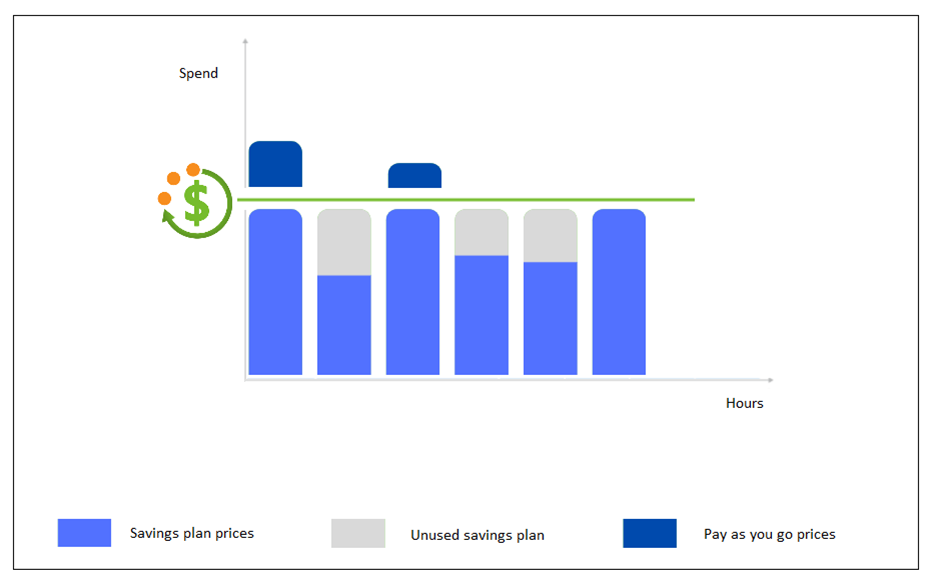
Limitations in Azure Savings Plan
Limited to Specific Services
Azure Savings Plans are primarily designed for virtual machines (VMs) and specific Azure services, such as App Service Plans and Azure Container Instances. They may not provide savings for all Azure services, so it’s important to check which services are covered and which are not.
Roll-over Limitation
While Azure Savings Plans do allow for unused savings to be rolled over to the next month, there is a limit to how much can be rolled over. Excess savings are lost if they exceed a certain threshold, so it’s essential to monitor and adjust your commitments accordingly.
Compatibility with Enterprise Agreements (EAs)
If your organization uses Enterprise Agreements (EAs) to manage Azure, Azure Savings Plans may not be as flexible in terms of combining discounts with EA agreements. Ensure that Azure Savings Plans align with your existing agreements.
Less Predictable Savings
While Azure Savings Plans offer flexibility, this can also make it challenging to predict and manage savings compared to traditional Reserved Instances (RIs), which provide a fixed and consistent discount.
Azure Savings Plan vs Reserved Instances
Azure Reservations offers cost-saving opportunities through one-year or three-year commitment plans for various products. This commitment results in discounts on your resource usage, potentially reducing costs by up to 72% compared to pay-as-you-go rates. Importantly, Reservations provide billing discounts without affecting the operational state of your resources. Once you’ve acquired a Reservation, the discount automatically applies to applicable resources.
You have the flexibility to choose between paying for a Reservation upfront or monthly. Notably, the total cost remains the same regardless of your payment choice, and there are no additional fees associated with monthly payments. It’s important to note that the monthly payment option is available for Azure reservations but not for third-party products.
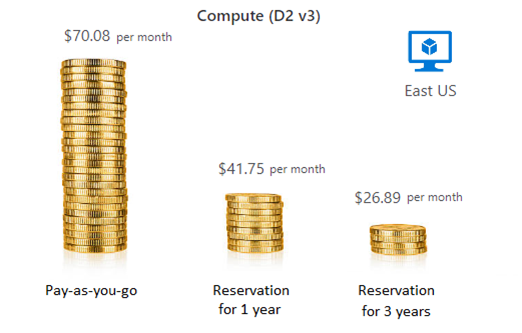
Key benefits of using Reserved Instance
Significant Cost Savings
RIs provide substantial discounts compared to pay-as-you-go (PAYG) pricing. By committing to a one- or three-year term, you can achieve cost savings that can reach up to 72% of the on-demand rates. This predictability in pricing helps organizations budget effectively.
Budget Predictability
RIs offer cost predictability, making it easier for organizations to forecast their cloud expenses over an extended period. This is particularly valuable for businesses with stable or predictable workloads.
Resource Availability
Reserved Instances ensure that the resources you’ve reserved are available when you need them. This can be especially beneficial in scenarios where resource availability is critical, such as production workloads.
Instance Family and Region Flexibility
While you commit to specific instance types and sizes, you have flexibility within the same instance family and region. This allows you to adapt to changing workload requirements and still benefit from the discount.
Efficient Resource Allocation
RIs encourage organizations to allocate their cloud resources efficiently. This means choosing the right instance types, sizes, and regions for your workloads, leading to optimal resource utilization.
Cost Reduction Across Multiple VMs
RIs can be applied to multiple virtual machines (VMs) as long as they match the instance type, size, and region specified in the reservation. This means that you can achieve savings across various workloads.
Transferability
Azure allows the exchange or resale of RIs within your organization or on the Azure Marketplace. This flexibility can be valuable if your resource needs change over time.
Automatic Application of Discounts
Once you’ve acquired an RI, the discount is automatically applied to matching resources. There’s no need for manual management, and the system handles it for you.
Hybrid Usage Benefit
Some cloud providers, including Azure, offer Hybrid Benefits, allowing organizations with Software Assurance to apply their on-premises Windows Server and SQL Server licenses to their RIs in the cloud, further reducing costs.
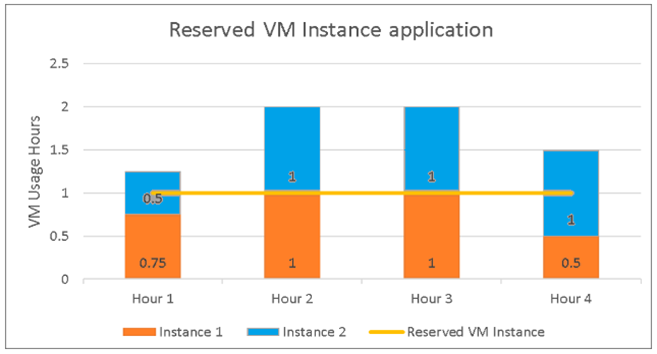
Limitations in Azure Reserved Instance
Resource Lock-In
When you purchase an RI, you commit to a specific virtual machine (VM) configuration, including instance type, size, and region, for a defined one-year or three-year term. This can lead to resource lock-in, which may not be ideal for organizations with rapidly changing workload requirements.
Unused Reservations
If your organization fails to utilize the reserved capacity fully, you may not realize the expected cost savings. It’s crucial to monitor your resource usage and adjust your RI commitments as needed. It also requires additional efforts to make sure that the new deployments are done with the purchased reservation SKU configuration. This must be done to make sure that all the purchased reservation instances are utilized properly.
Fixed Discounts
The discount offered by RIs is fixed for the entire term. This means that if Azure reduces the pricing of specific VMs during your reservation term, you might not benefit from the price reduction.
Limited to Specific Services
RIs apply primarily to virtual machines (VMs) and certain Azure services like SQL, Redis cache, and Cosmos DB. They may not provide savings for all Azure services, so you should verify which services are covered by your reservation.
Comparison between Azure Savings Plan and Reservations
The decision between Azure Savings Plans and Reserved Instances (RIs) ultimately depends on the unique needs and usage patterns of your organization in Microsoft Azure. Both options offer valuable cost-saving benefits but differ in terms of flexibility, commitment terms, and the extent of automation.
| Aspect | Azure Savings Plans | Reserved Instances (RIs) |
| Savings | Discounts are based on hourly usage commitments. Up to 65% savings on pay-as-you-go prices. | Discounts are fixed and generally higher, often reaching up to 72% savings compared to pay-as-you-go pricing. |
| Budget prediction | Exact budget cannot be predicted for the purchased 1-year or 3-year term since usage beyond the purchased limit will lead to an increase in cost. | Exact budget can be predicted for the purchased 1-year or 3-year term. |
| Applicable resources | Applies only to compute resources like VM, App service plans, and container instances. | Applies to compute and storage resources like VM, App service plan, Azure SQL and Redis cache. |
| Roll-over Savings | Rolls over unused savings to the next month, minimizing waste. | Unused reservations can result in unrealized savings and do not roll over. |
Azure Savings Plans are a newer, more flexible pricing model that provides cost savings based on hourly usage commitments. They are well-suited for organizations with variable workloads, as they allow for adaptation to changing instance types, sizes, and regions.
The ability to automatically apply savings and Savings Plans offers agility and simplicity in cost management. They are also compatible with other discounts like Enterprise Agreements, providing versatility for complex pricing structures.
On the other hand, Reserved Instances (RIs) offer fixed discounts on specific instance types, sizes, and regions over one-year or three-year terms. RIs are ideal for organizations with predictable, stable workloads that can make upfront payments and are willing to commit to resource configurations. While they offer predictability and cost savings, they may not be as adaptable to rapidly changing needs.
To make an informed choice, it’s essential to consider your organization’s workload predictability, budget constraints, and the degree of flexibility you require. Many organizations find that a combination of both Azure Savings Plans and Reserved Instances, strategically applied to specific workloads, offers the best balance between savings and adaptability.
By understanding the differences and evaluating your usage patterns, you can effectively leverage these Azure cost optimization tools to achieve your cloud cost reduction goals and maintain cost control in your cloud environment.
Save more on Azure Reservations and Savings Plans with Turbo360
Turbo360 is an advanced cloud management and monitoring platform that empowers organizations to effectively oversee their Azure resources, improve operational efficiency, and enhance cost management. Turbo360 Cost Analyzer offers a comprehensive suite of features, including resource tracking, alerts, usage analytics, and integration, making it a valuable tool for optimizing Azure deployments.
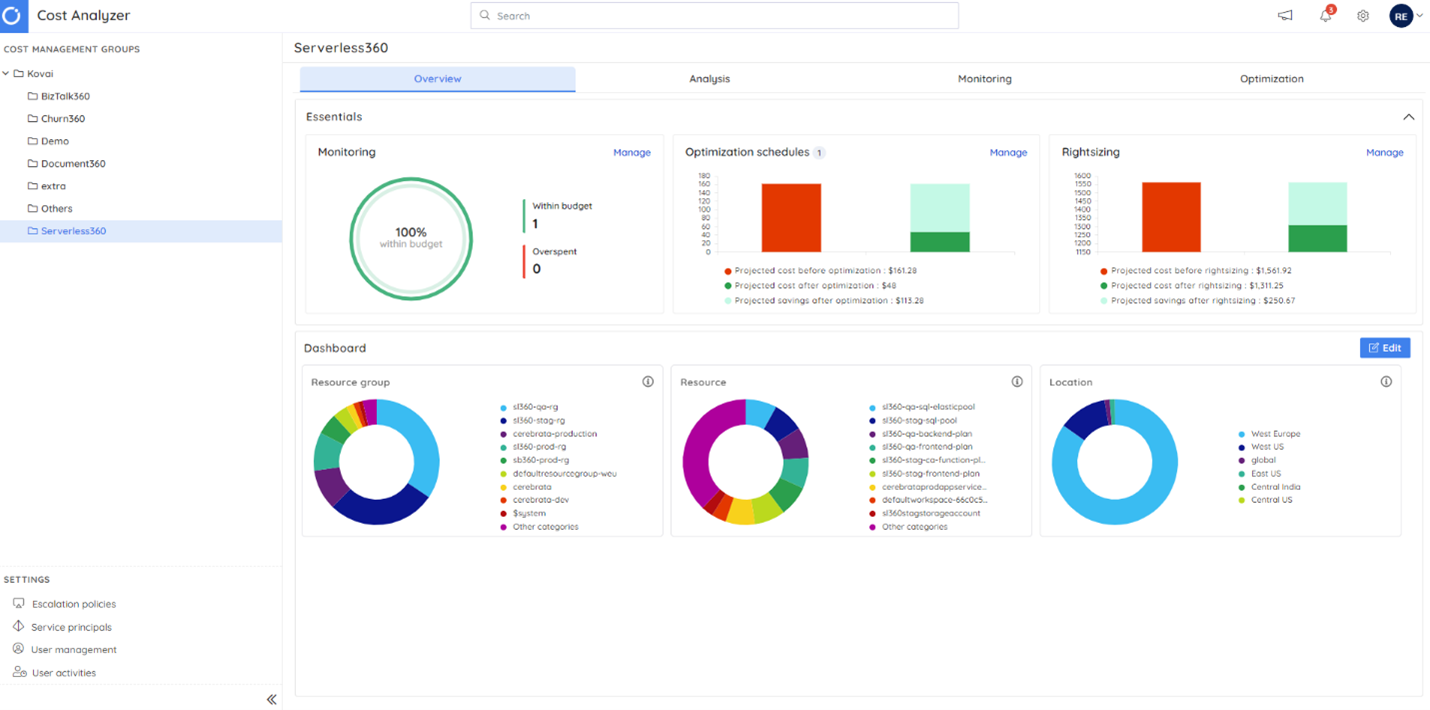
Cost Analyser in Turbo360 provides recommendations on purchasing reservations to reduce the Azure spent on resources like App Service plans and Virtual machines. It also provides insights into the unused purchased reservations in an organization. Through these recommendations, it is possible to estimate the savings that can be achieved by purchasing the reservations.
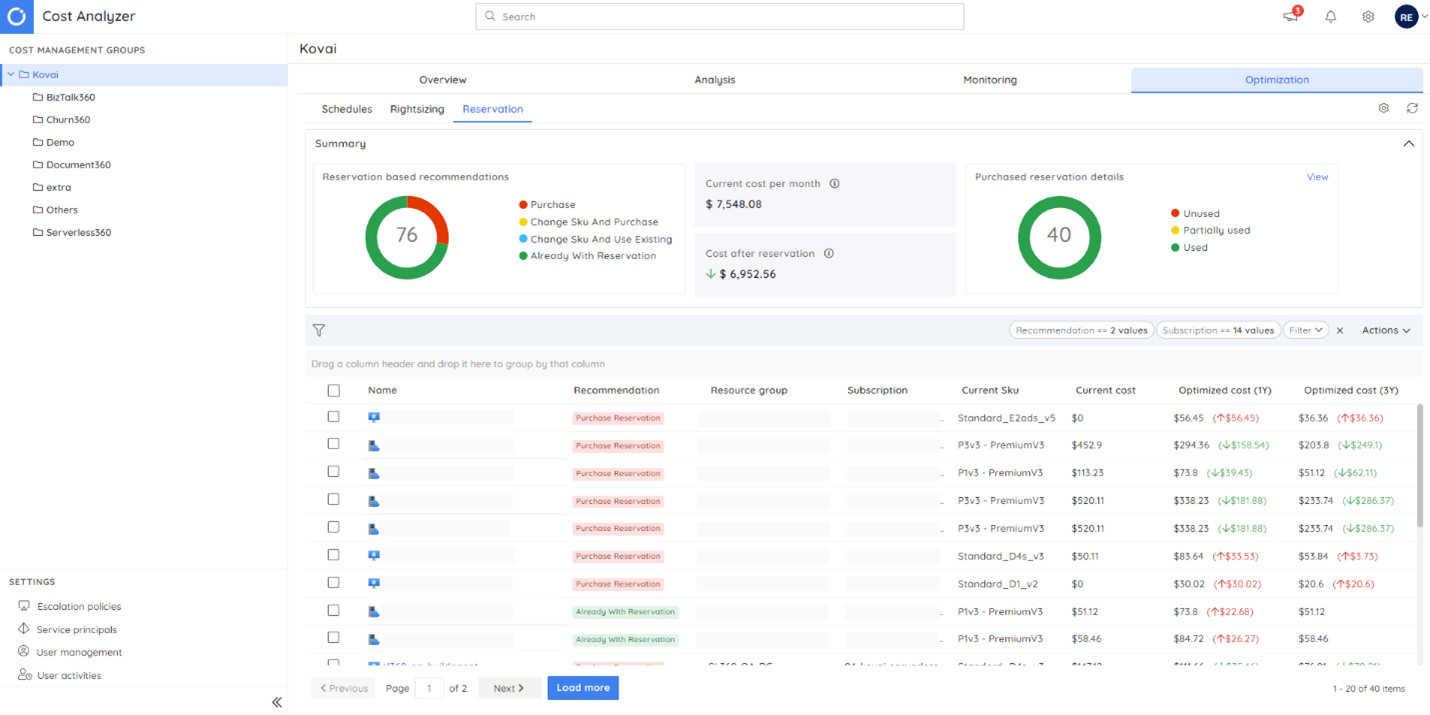
The interface to view the resources making use of the purchased reservations will be very helpful since the resource reservation is dynamic and not configurable.
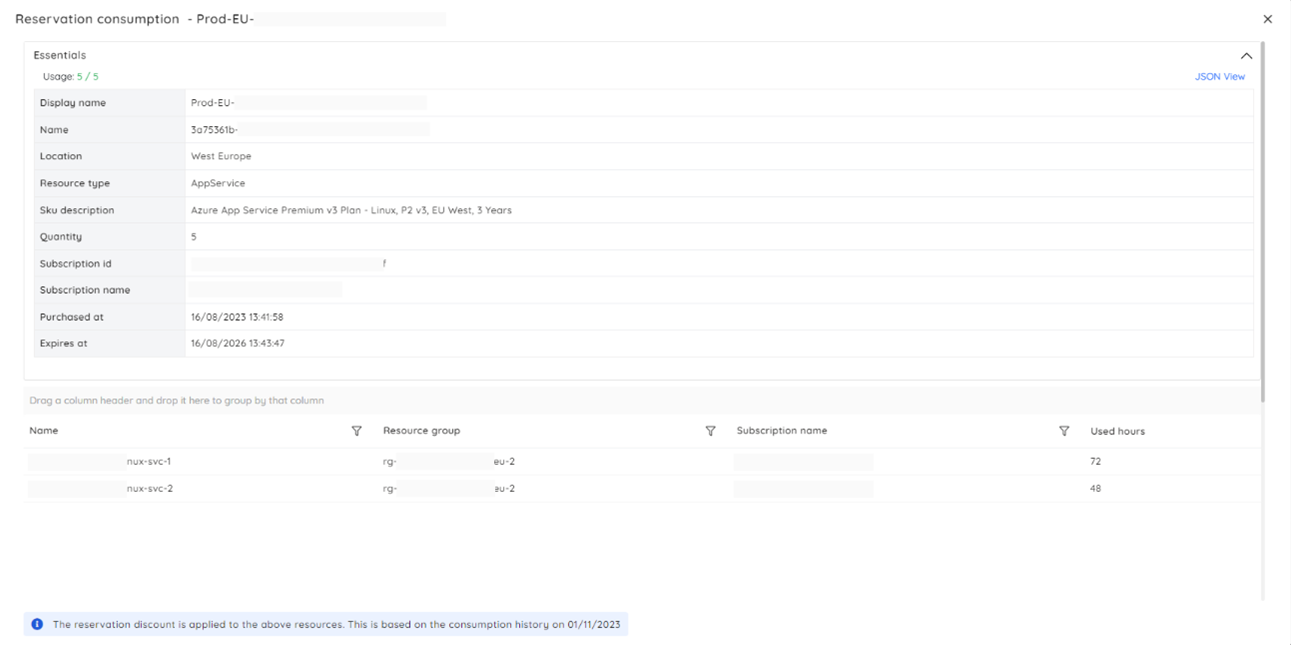
Along with reservation recommendations, Turbo360 also provides recommendations based on the resource usage to downgrade the resource to reduce the cloud spend or upgrade the resource to increase its performance. It also provides the list of idle resources that can be deleted to eliminate the unnecessary cost spent on them.
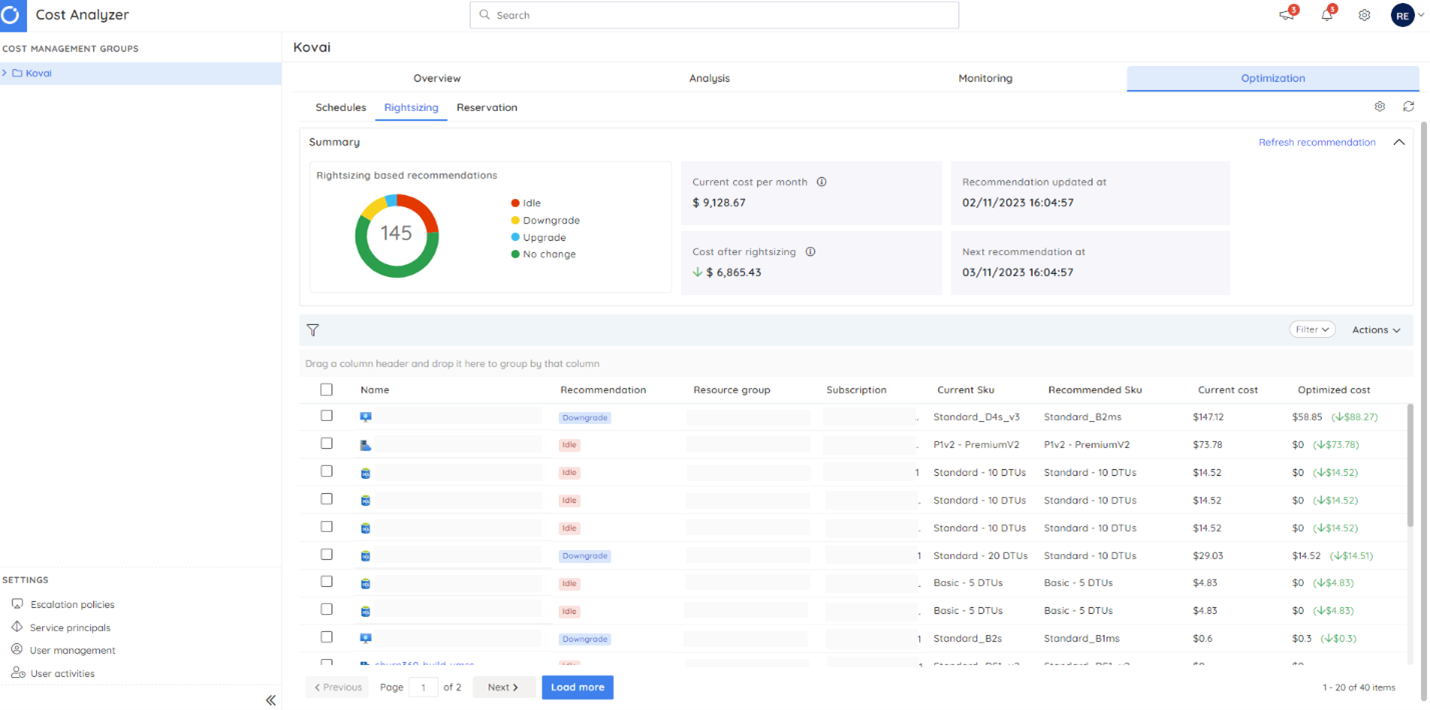
Conclusion
The key to a successful cost optimization strategy lies in understanding your organization’s usage patterns, budget constraints, and need for flexibility. In many cases, a balanced approach that combines Azure Savings Plans and Reserved Instances can offer the best of both worlds. By leveraging both these cost-saving tools judiciously, you can adapt to changing workloads while reaping significant savings.
Ultimately, the decision should align with your specific goals and help you achieve the right balance between cost efficiency and resource adaptability in the dynamic world of cloud computing. Turbo360’s optimization recommendations help in optimizing the cloud cost by rightsizing the resources or purchasing the reservations to make use of the reservation discounts.
FAQs
1) Can I use Azure Savings Plans for any Azure service?
Azure Savings Plans apply to select Azure services, including virtual machines (VMs), App Service Environments, Azure Kubernetes Service (AKS) nodes, and Azure Functions Premium Plan. However, they don’t cover all Azure services.
2) Is there a term limit for Azure Savings Plans or Reserved Instances?
Azure Savings Plans and Reserved Instances (RIs) have different term limits.
Azure Savings Plans: Offer one- or three-year commitment options, allowing flexibility in usage across various services. They provide consistent savings over pay-as-you-go pricing.
Reserved Instances (RIs): Have fixed terms of one or three years, with one-year RIs offering less discount compared to three-year RIs. They provide significant cost savings but may have less flexibility compared to Savings Plans.
3) Can I modify or cancel an Azure Savings Plan or Reserved Instance after purchase?
Azure Savings Plans and Reserved Instances (RIs) come with specific terms regarding modifications and cancellations:
Azure Savings Plans: You cannot modify the purchased plan, but you have flexibility in changing the scope (e.g., region or VM size). Cancellation is possible, but it may result in additional charges. Cancellation terms depend on the commitment term (one or three years).
Reserved Instances (RIs): Modifications are limited to changes in the instance size within the same VM family. Cancellation may be possible, but it often involves paying for the remaining term. Refunds depend on the specific Azure region and the terms of service.
4) Can I combine Azure Savings Plans and Reserved Instances for more cost savings?
Yes, you can combine Azure Savings Plans and Reserved Instances (RIs) for additional cost savings. Azure applies both discount types to your usage automatically, optimizing costs across eligible resources.
Here’s how it works:
- Azure Savings Plans: Apply to a monetary commitment per hour, providing flexibility across various services.
- Reserved Instances: Offer fixed-term commitments for specific VM sizes and families, providing substantial discounts.
By combining both, you can save on different types of resources based on your organization’s needs. Azure’s billing system automatically applies the most cost-effective option for each resource.
5) What is the difference between Azure 1 year savings and 1-year reserved?
In Azure, the terms “1-year savings” and “1 year reserved” typically refer to two different pricing options:
1 Year Savings Plan:
Azure Savings Plans offer flexibility and savings over pay-as-you-go pricing.
You commit to a consistent amount of usage (measured in $/hr.) for a 1- or 3-year term.
Savings Plans provide significant cost savings and flexibility to apply commitment across various services.
1 Year Reserved Instance (RI):
Reserved Instances involve a commitment to a specific virtual machine (VM) size and family for a fixed 1- or 3-year term.
You receive a significant discount compared to pay-as-you-go pricing for the committed VM configuration.
RIs offer fixed-term commitments, providing substantial savings for specific VM configurations.
The main difference lies in the flexibility and scope of commitment. Azure Savings Plans allow flexibility across services, while Reserved Instances are more specific to VM configurations. The optimal choice depends on your organization’s requirements for flexibility and cost savings. Always refer to the latest Azure documentation for precise details.









